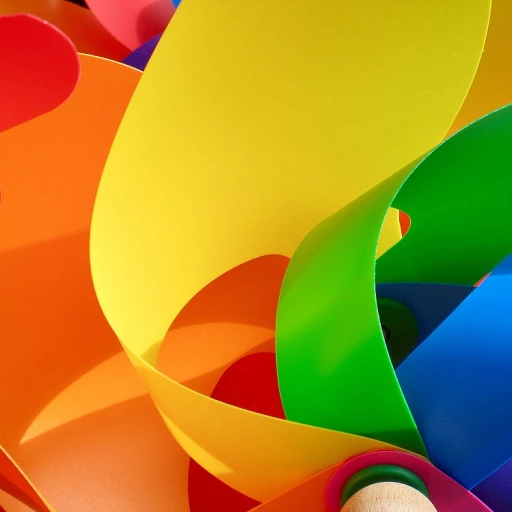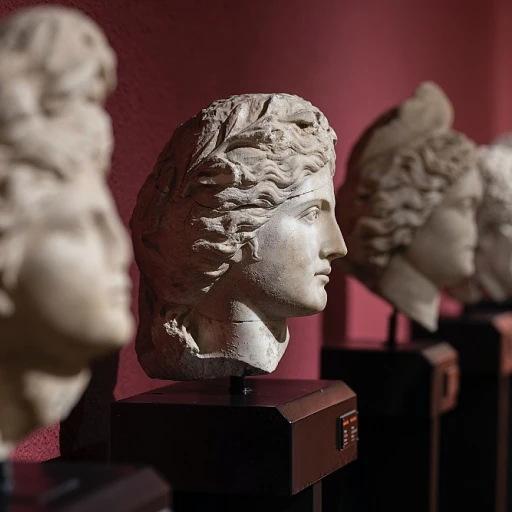The Heartbeat of Art: Captivating Paintings and Artists
The Essence of Artistic Expression
The mesmerizing world of paintings and the artists behind them create a symphony of color, form, and emotion that captivates enthusiasts and collectors alike. Masterpieces from renowned painters like Van Gogh, Monet, and Picasso have left an indelible mark on the art world, their passion resonating through the centuries. Today, contemporary artists continue to push boundaries, transforming vibrant visions into breathtaking canvases that embody the heartbeat of art.
Each brushstroke serves as a conduit of emotions, telling stories that words often cannot capture. It's this unique ability of art to convey profound messages that creates an unbreakable bond between the artist and the viewer. Whether you're a seasoned collector or someone who appreciates the finer things in life, understanding these connections can greatly enhance your appreciation of fine pieces.
Building your own art collection can be an enriching journey (as we will explore later), but it starts with recognizing and valuing the stories paintings tell. Venturing into the realm of portraiture art is one example of a niche that offers both captivating aesthetic appeal and investment potential. For those interested in the delicate balance of emotion and finance within this sector, this
guide to investing in portraiture art provides valuable insights.
Understanding what makes a painting resonate profoundly or an artist become celebrated requires an exploration of passion, technique, and historical context. This knowledge not only enhances appreciation but also serves as the foundation for anyone looking to enrich their personal collection. The timeless beauty of captivating artworks continues to invite us into dialogues rich with cultural meaning and aesthetic delight.
Art for Every Space: From Originals to Prints
Transforming Spaces with Art's Personal Touch
The world of art is as diverse as the spaces it inhabits. Whether you're drawn to a masterfully crafted original or a high-quality print, the right piece of art can add depth, drama, and personality to any environment. A majestic painting in a luxurious foyer or a minimalist print in a serene study can both serve as focal points that drive the aesthetic conversation.
When selecting artwork, it's important to consider the setting it will occupy. Large spaces may benefit from imposing canvases or vibrant murals, while smaller rooms can be more suited to intimate pieces that draw viewers in for a closer look. With a wide variety of options, every art enthusiast can find a style that harmonizes with their living or working space.
The choice between originals and prints often comes down to personal preference and budget. Originals, with their unique textures and history, carry a distinct aura of exclusivity. On the other hand, prints offer a more accessible taste of luxury and allow collectors to diversify their acquisitions without sacrificing style. Each has its own charm and can coexist peacefully within a single collection.
Finally, those seeking to invest in portraiture art—whether an original or a print—should explore our comprehensive guide to investing in portraiture art. This knowledge can provide valuable insights that guide your selection process, ensuring the artwork you choose not only complements your space but also carries lasting value.
The Price of Beauty: Understanding Art Valuation
The Intricacies of Art Valuation
Art valuation can often feel like navigating a vast ocean without a map. What makes one painting worth millions while another languishes in obscurity? The answer lies in a complex interplay of factors that discerning collectors and intrigued bystanders alike find both baffling and fascinating.
Firstly, the artist's reputation holds significant weight. An established artist with a celebrated portfolio will generally command higher prices due to both demand and proven longevity in the art market. However, upcoming artists with distinct styles can sometimes disrupt this norm, highlighting the dynamic nature of art valuation.
The artwork’s provenance also plays a crucial role. The history of an art piece, including its origins and previous ownership, enhances its allure and value. An artwork connected to notable collectors or direct lineage from the artist can see its worth soar.
Market demand is an ever-changing metric that influences valuation. Art styles and trends evolve with societal shifts, and what might be in vogue today could lose relevance tomorrow. On this note, eco-conscious art is gaining momentum; understanding how these choices impact luxury art values is becoming increasingly important.
Discover more.
When it comes to valuing art, condition and rarity cannot be overlooked. Conservation experts meticulously examine artworks, and any restoration history might affect the price. Likewise, a rare piece is more likely to fetch high prices, especially if it is the only one of its kind or part of a limited series.
Unlike other commodified assets, art offers an emotional resonance that complicates valuation. The profound connection a piece fosters in its viewers often transcends numerical worth—a symbiosis of beauty, history, and emotion that challenges traditional valuation methods.
As you dive deeper into the world of fine art, these elements provide a foundational understanding of market valuations. Whether you are a seasoned collector or a curious novice, this knowledge is essential in navigating the captivating complexities of the art market.
Art Galleries: Where Creativity Meets Commerce
Where Art and Business Intertwine
Stepping into an art gallery is akin to entering a dialogue between creativity and commerce. These curated spaces are more than just exhibition halls; they are arenas where the emotional resonance of art meets market dynamics. Art galleries serve as pivotal platforms for both emerging and established artists to showcase their creations, offering a glimpse into the kaleidoscope of cultural expression.
For many, galleries become the bridge between artists and their audience. They provide an opportunity for art enthusiasts to experience the heartbeat of art firsthand, as noted in earlier discussions on captivating paintings and artists. Furthermore, art enthusiasts find diverse works that span from original masterpieces to carefully crafted prints, appealing to a wide range of aesthetic preferences and budget considerations.
However, the allure of galleries extends beyond the artworks themselves. They are curated to enhance the viewer's experience, with lighting, spacing, and ambiance meticulously tailored to foster appreciation. The symbiotic relationship between fine art and its setting in galleries cannot be overstated.
Moreover, galleries often serve as educational hubs, offering talks, workshops, and events that delve into the subtleties of art valuation and collecting—topics that we shall explore further in upcoming discussions on art valuation. In this way, galleries are not just commercial venues; they contribute to the ongoing narrative of the art world, enriching our understanding of art's significance and its ever-evolving landscape.
Art galleries also play a crucial role in the modern art scene, bridging the gap between the avant-garde, such as street art, and more traditional forms like fine art photography. These spaces thrive as convergences of ideas and styles, continually adapting to the diverse tapestries of contemporary artistic expression.
In conclusion, art galleries are essential in the journey of art from creation to appreciation, each serving as a witness to the dynamic interplay between creativity and commerce. As we continue to disentangle the intricate relationships within the art world, these spaces remind us that art, at its core, remains a profound extension of our humanity and culture.
The Modern Art Scene: From Street Art to Fine Art Photography
The Evolution of Artistic Expression
In today's dynamic art world, the boundaries of traditional and contemporary art continue to blur, giving rise to a vibrant modern art scene that captivates audiences across the globe. Far removed from the confines of classical artistry, today's art culture embraces diverse forms, reflecting the ever-evolving landscape of creative expression.
Street art, once relegated to the fringes of the art world, now holds a celebrated place within modern artistic discourse. Its bold, unrestrained nature captures the raw energy of urban environments and engages a broad audience with its often sociopolitical themes. The visually striking works of street artists like Banksy and Shepard Fairey have not only transformed cityscapes but have also graced respected galleries, cementing their influence within the realm of fine art.
However, the evolution doesn't stop there. Photography, once considered a mere tool for documentation, has emerged as a legitimate and revered form of fine art in its own right. With the advent of fine art photography, artists like Cindy Sherman and Andreas Gursky have pushed the boundaries of this medium, creating evocative and thought-provoking pieces that challenge traditional perceptions.
This burgeoning interest in diversified forms of art, alongside an appreciation for traditional pieces, underscores the unique heartbeat of the art world—a theme explored previously in our discussion on
exquisite artworks. The art market now embraces a myriad of styles, inviting collectors and art enthusiasts to explore an ever-expanding tapestry of creative endeavors.
Moreover, the advent of digital technologies has allowed for even more innovative artistic expressions, reshaping what we understand as contemporary masterpieces. From digital installations to NFT art, the possibilities are endless for artists pushing the limits of technology and creativity simultaneously. These groundbreaking developments provide fresh opportunities for collectors ready to delve into this new frontier, complementing the more traditional pieces that first captured their hearts.
A comprehensive view of today's modern art landscape reveals how adaptability and innovation continue to redefine artistry, making it an exciting era for both creators and collectors alike.
Collecting Art: Tips for Building Your Own Collection
Curating Your Personal Art Collection
Building a personal art collection is a thrilling journey that extends far beyond mere acquisition. It's about creating an array of artworks that not only appreciate in value but also resonate with your personal taste and style. As we have explored the rich tapestry of captivating paintings and artists, it's time to delve into the intricacies of becoming a discerning art collector.
To begin your collecting journey, it's essential to educate yourself on various art movements, artists, and mediums. Attend exhibitions, read up on art history, and engage with artists and gallery owners to gain insights into the art world. Remember, a well-informed collector is better equipped to make savvy acquisitions.
When selecting artworks, consider the overall theme or story you wish to convey through your collection. Whether you are drawn to the expressive charm of modern art, showcased in striking forms like street art and fine art photography, or prefer the classic elegance of traditional paintings, your collection should be a reflection of your unique vision.
Investment in art can also be strategic. Be mindful of the potential for appreciation in value and consider consulting with art advisors or financial experts who specialize in art valuation. This will aid you in understanding market trends and making informed decisions about which artworks might present solid investment opportunities.
Finally, as you grow your collection, think about how each piece will interact within your space. Art is meant to be displayed, enjoyed, and shared. Curate your space with a thoughtful eye—consider lighting, placement, and the visual dialogue between pieces.
Building your own art collection is a celebration of creativity, personal taste, and strategic investment. Embrace the journey, and watch it unfold into a treasury of beauty and inspiration within your own walls.




-teaser.webp)









